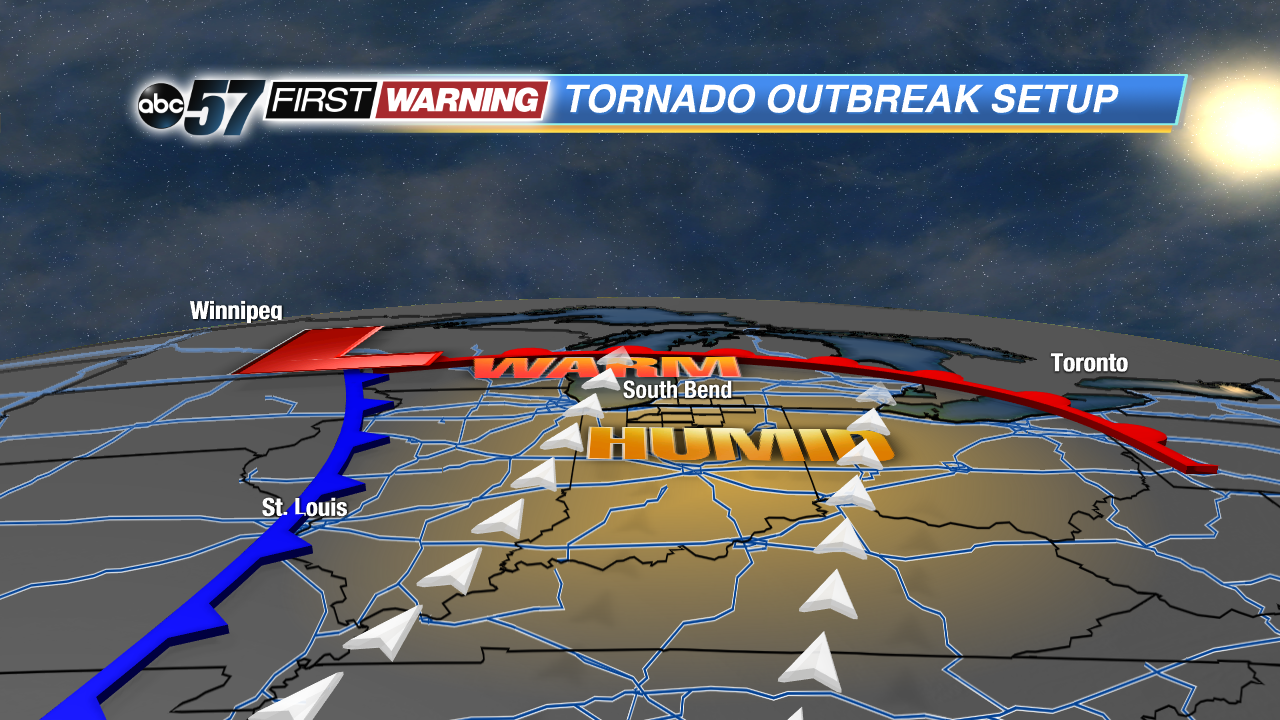Deadliest U.S. tornado in 6 years hits Alabama; could it happen in Michiana?
Posted: Mar 4, 2019 12:44 PM EST
Sunday featured a significant severe weather outbreak across the Deep South with 136 reports (and counting) of tornadoes, hail or damaging winds. Of those reports, 41 were tornadoes. And. once storm surveys are completed by the National Weather Service, it's likely that many of those reports will become official from Alabama to South Carolina. A few of the tornadoes were particularly intense. That includes the monstrous one that caused extreme damage from Beauregard to Smiths Station in Lee County, Alabama.
The preliminary report from the National Weather Service has that particular tornado rated as an EF4 with winds of at least 170 mph. That qualifies as "devastating" damage. For perspective, winds of 170 mph are stronger than many category 5 hurricanes. If it winds up officially being rated an EF4, it would be the first such tornado in the U.S. since 2017. That tornado is the one responsible for killing at least 23 people, which qualifies as the single deadliest tornado in the United States since the Moore, Oklahoma, tornado of 2013.
Moreover, the 23 deaths caused by the Lee County tornado are more than double the 10 tornado deaths in all of 2018 in the U.S. Let that sink in for a moment. Something else that really sticks out about that tornado is the fact that it carried a flea market billboard nearly 20 miles from its original location! The billboard stood in Smiths Station, Alabama, and was found in Hamilton, Georgia! It takes extreme winds to do that. Of course, while the Southeast was seeing a severe weather outbreak, we were in the 20s with lake effect snow. That isn't always the case in Indiana in March, though.
Severe weather and tornadoes begin to become more likely once the calendar flips to March and beyond. To get a legitimate tornado threat in Indiana and surrounding states, adequate warmth and moisture are needed. Those ingredients are typically lacking until late March. But, if you hear a meteorologist talking about temperatures above 60° coupled with dew points above 55° and either a cold or warm front approaching, you can almost bet thunderstorms are in the forecast. If temps and dew points are higher, and there's sufficient instability and wind shear in play, severe weather and tornadoes become realistic threats.
For Indiana and Michigan, these severe weather-supportive setups are most common in April, May, June, and July. Those months feature the most tornadoes, on average, in each state. That's mostly due to the simple fact that we have more warmth and moisture available during those months. But what about tornado outbreaks? They have happened in Indiana, and they will continue to happen. There have been 22 tornado outbreaks in Indiana since data on tornadoes began being kept. All of the outbreaks featured at least 8 twisters, with 6 of them containing at least 20. Believe it or not, Indiana has seen two tornado outbreaks in which at least 30 tornadoes struck the state. Here are Indiana's 22 tornado outbreaks by month:
•February: 1
•March: 4
•April: 5
•May: 2
•June: 4
•August: 1
•October: 2
•November: 3
No, tornadoes don't occur all the time in Indiana and Michigan. There certainly aren't tornado outbreaks every year either. However, both tornadoes and tornado outbreaks have and will continue to happen in this part of the country. And, as we head into the heart of March, the chance of tornadoes happening goes up.






